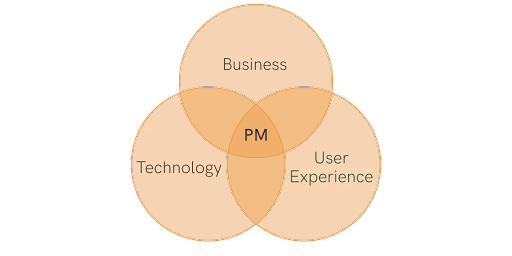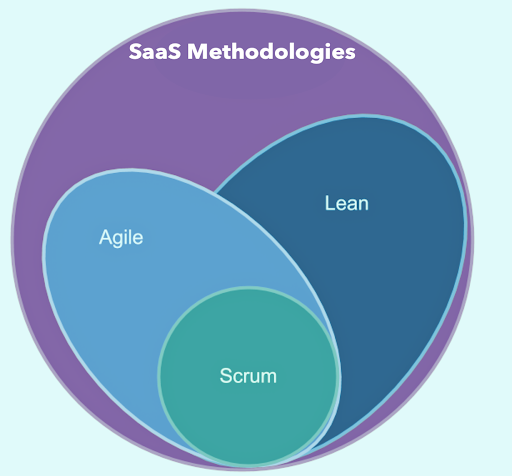SaaS (Software as a Service) product management focuses on designing, creating, marketing, selling, and improving the product. Almost all of the SaaS teams are involved in this iterative process involving research, analysis, design, implementation, testing, and maintenance of the product.
It includes customer segmentation, product roadmap, pricing strategies, market analysis, competitive analysis, and customer feedback. The ultimate goal for SaaS product management is to create a product that meets customer needs and provides a competitive advantage.
The success and failure of the product often depend on the SaaS product management in an ever-increasing competition in the market. The rapidly changing market dynamics are a testament to such competitiveness —
- The value of the SaaS market is predicted to rise from $272.49 billion in 2021 to $307.3 billion by the end of 2026.
- According to the most recent statistics, there are over 30,000 SaaS firms.
Also, SaaS solutions are adopted across a wide range of industries globally, including (but not limited to) healthcare, education, finance, and retail.
Catering to such a huge market in a fast-growing economy requires leveraging people’s power. And this is why it is necessary to build a successful SaaS product management team.
This article will highlight some key hacks for building a powerful SaaS product management team. But first, let us quickly understand the involvement of product managers in team building activity.

The role of product managers
Product management is the key in any software development environment since it is responsible for defining the product roadmap, setting product strategy, and leading the cross-functional team responsible for delivering the product.

Source: Role of Product Manager
Product managers act as liaisons between stakeholders and the engineering team, ensuring that the team has a clear vision of what needs to be delivered and when. Product managers will have the final say when using tools, methods, resources, and technologies. They will determine the number of team members, a platform to build the product, software for product development, timeline and sprints for project goals, and much more.
Also, product managers are the backbone when hiring people for different product management roles. They identify potential customer problems, develop solutions, and help HR teams pick the right individuals.
In short, product managers are responsible for growing a SaaS business that begins with identifying product opportunities, building strategies to capitalize on them, and ensuring that their team delivers the best solution possible. Also, they have a major say in the hiring process.
Tips for building a successful SaaS product management team
Building a successful SaaS product management team is a lengthy process that needs time, dedication, and commitment.
As with building a successful team in any industry, the key to success comes down to having a strong foundation of talented individuals and an effective strategy.
Here are some powerful, must-try ways your SaaS business should follow to build a successful SaaS product team.
Hiring the right people — starting with the product manager
Every team needs a leader. Therefore, choose experts that bring much-needed skills and experience to lead the team. This includes having a vision for the product, staying on top of industry trends, communicating ideas, and making decisions effectively.
Building a successful SaaS product management team starts with finding the right people. Therefore, begin with hiring individuals having a deep understanding of the SaaS space, a strong technical background, and an ability to think strategically.
The major hiring often involves a product manager who understands software development and customer needs. They should be able to think strategically and tactically, to identify customer problems and develop solutions that meet their needs.
When hiring product managers, look for candidates with excellent communication skills and the ability to articulate their ideas and visions clearly. Product managers will work effectively with technical and non-technical teams, so strong communication skills are non-negotiable.
They also play a major role in identifying and bringing on other team members with complementary skills and experience. This includes hiring developers, marketers, UX designers, customer service representatives, and specialists. Each member of the team should bring something unique to the table, and it’s essential that everyone understands their role and works together cohesively.
Effective team organization
Once you have hired your product management team, organizing them to maximize their efficiency and effectiveness is important.
The common way for SaaS team organization is through matrix organization. It involves having both vertical and horizontal teams focus on different tasks.
Vertical teams focus on tasks related to individual products or services, such as research, design, and development. Horizontal teams work across multiple products or services, pivoting to tasks like user experience (UX) design and analytics.
Organizing the team helps ensure that each team member has a clear role and that all tasks are completed effectively. Each team member specializes in their area of expertise, enabling them to collaborate with other teams when necessary.
Often, this requires regular meetings coupled with progress review reports followed up by product managers. This helps track project progress, identify issues or challenges, and brainstorm new ideas as possible solutions. Everyone in the team must have the opportunity to contribute and provide input to remain collaborative and efficient.
Setting up processes
Once you have the perfect product manager and a team structure, think of setting a process to drive efficiency. More than having the right people in the team, it is important to organize them effectively, which goes into building a successful SaaS product management team.
This requires following SaaS product management methodologies that help develop, launch, and maintain software products. These methodologies involve understanding customer needs, defining product features and benefits, designing the user experience, and managing the product’s lifecycle.
Common SaaS product management methodologies include agile, lean, and scrum.

Source (modified): Different SaaS methods
Agile: A product management method that adopts an iterative approach focusing on customer feedback, rapid prototyping, and continuous testing with a feedback mechanism. It emphasizes collaboration, customer feedback, and iterative development cycles that encourage teams to remain flexible to adapt quickly to changes.
Lean: A process-driven product development approach emphasizing continual improvement and waste reduction. It focuses on creating value for customers and reducing non-value-adding activities. When followed, product managers monitor the end-to-end product development process and remove any unnecessary steps using customer feedback to inform decisions.
Scrum: Scrum is an agile framework for product development that emphasizes collaboration, short feedback loops, and continuous improvement. It focuses on breaking complex tasks into smaller, manageable chunks that the teams can complete. Here, product managers uplift teams to collaborate, communicate, and continually refine the product.
Following the aforementioned SaaS methodologies requires setting up a strategy to meet quality standards. This involves establishing standards for developing, testing, launching, and maintaining products to improve customer experience.
Moreover, apart from developing processes for developing software, there must be processes in place to test the software, collect user feedback and monitor performance metrics. It ensures that the hired SaaS product management team follows these methods and can address product-related issues quickly.
Bottomline
SaaS product management teams are built on strong communication, collaboration, and critical thinking skills. Also, they are turned into a bunch of successful professionals with the right guidance and approach from product managers who ensure that each team member is well-equipped with the necessary knowledge, experience, and tools.
You can choose the three basic approaches (as explained above) that go into building a successful SaaS product management team that can achieve its goals and objectives and create a solid platform for future growth and innovation. Product success is inevitable with the right team (including a powerful product manager), effective team organization, and processes.























Leave a comment!